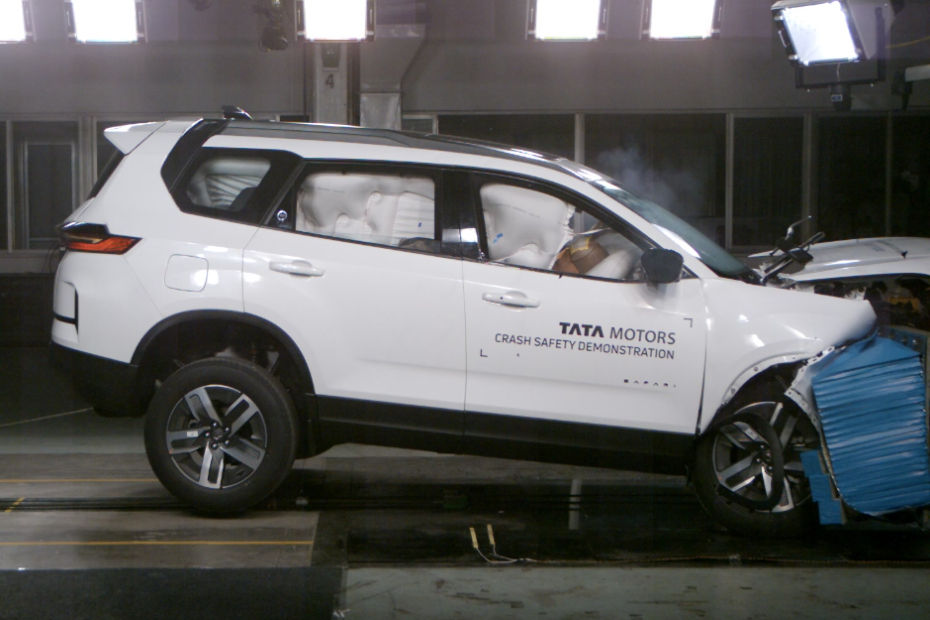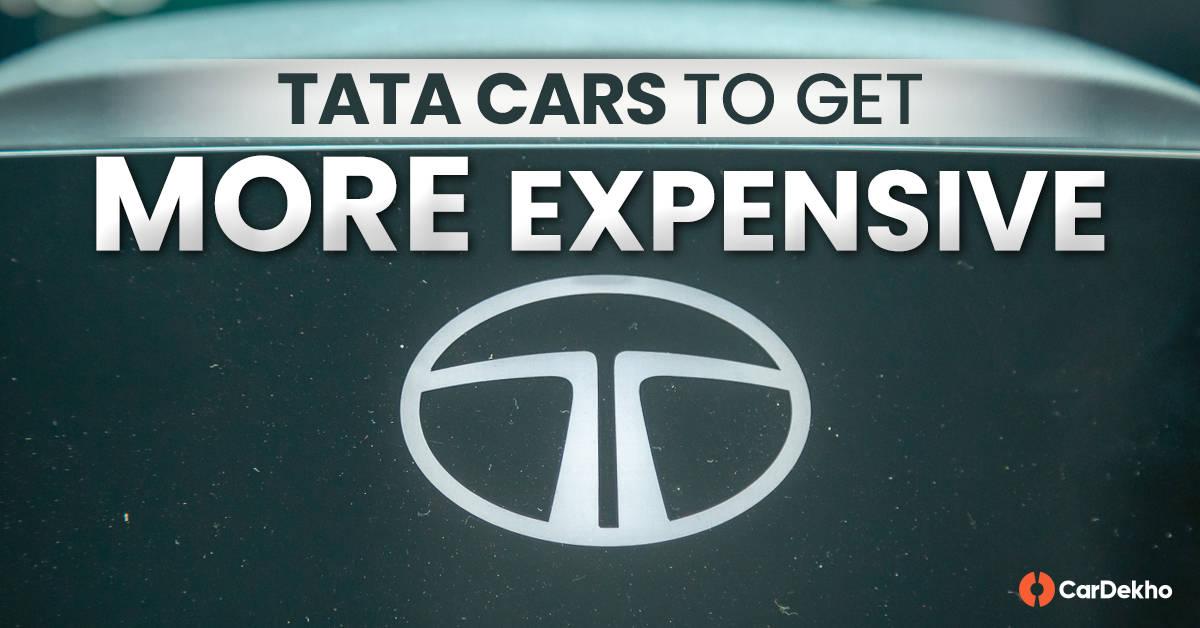Tata Safari 5-Star Safety Behind The Scenes: How Tata Conducts Internal Crash Tests To Make Its Cars Safer For Indian Roads
Modified On Mar 05, 2024 12:34 PM By Shreyash
- Write a comment
Prior to full crash tests, vehicles undergo computer simulations and sled acceleration analysis for structural and restraint system evaluation

Crash test safety ratings have become an important element in the new car buying decision for Indians. Even before carmakers submitted their models for a new car assessment program (NCAP), they also had to conduct internal tests to comply with basic industry regulations. That’s how cars that have scored 0-stars are still on sale. For India, the first car brand that comes to mind for 5-star safety ratings has to be Tata and its current flagship offering, the Tata Safari SUV has earned a 5-star rating from both GNCAP and Bharat NCAP. Tata recently invited us to their crash test facility in the Pimpri manufacturing plant near Pune to give us an insider look at how they make their cars safer using the Safari SUV for the demonstration.
What is a crash test?

A car crash test is a rigorous procedure where vehicles are deliberately crashed to assess their crashworthiness and ability to keep passengers safe during high-speed impacts. The crash test was first initiated by General Motors in 1934. Today, multiple crash testing agencies, in the form of different NCAPs, evaluate car safety around the world.
Also Check Out: Tata Nexon Global NCAP Crash Test Comparison: Then vs Now
Stages In Crash Test

When starting a new crash test project, cars are not simply picked from the lineup and crashed directly into the barrier. Instead, the process involves several stages through which a vehicle's body-in-white (BIW) and its structure is virtually assessed via computer simulations, passing which it is subject to impact testing. A Body in White (BIW) is essentially the basic skeleton frame of a vehicle, constructed by joining various long, cross, and side members. At this stage, the BIW lacks door panels, powertrain components, and all interior trims.
Additionally, the car's restraint system and interior trims should meet minimum safety parameters in the sled acceleration test before proceeding to the final crash test. Each of the stages mentioned here has been detailed below:
Simulation Stage

-
The process begins with a simulation stage, where the models undergo assessment through Computer-aided engineering (CAE). Within CAE, various tests are conducted on the vehicle through simulation, including offset front, side impact, side perpendicular pole, and pedestrian protection tests. This allows the carmaker to analyse and verify any discrepancies in the bodyshell integrity before putting the vehicle for the final crash test, hence saving time and money.
Sled Servo Acceleration Test

-
After the model satisfies all the parameters in CAE, it’s time for the sled acceleration test. For this test, a cross section of the car is created and placed on the platform called ‘servo acceleration platform’, as seen in the image above. Test dummies are also placed on the front seats. This test primarily aims to evaluate the vehicle's individual components and restraint systems like airbags and seatbelts, while also assessing if interior trims such as screen, dashboard panels, and edges could pose a risk to the occupants.
-
To conduct this test, the cross section placed on the servo acceleration platform is accelerated via a pneumatic cylinder, thereby creating a whiplash effect for the occupants. The speed they can test for goes up 80-90kmph but they're carried out at 64 kmph or less as per regulatory requirements. The dummies inside experience forces of up to 40G, replicating the real inertia effect of a car accident. Consequently, the dummy's body is propelled towards the dashboard with significant force. Airbags are also deployed during this time.
-
The dummies mounted in the cross section of the vehicle are then studied to analyse the forces experienced during the sled acceleration test and to observe the interaction between the interior trims and the test dummy. This test is conducted multiple times prior to the full car crash test to ensure that engineers gather sufficient research, data, and confidence before advancing further. These tests are significantly less expensive than real car crash tests and can be conducted more frequently, i.e, at least twice a day.
The Final Test

-
After undergoing several rounds of simulation and sled acceleration tests, the final car crash test is executed. This involves a production-specification model with all the components being slammed into a crash test barrier at a predetermined speed. During our visit, Tata decided to conduct a front offset barrier crash test on its flagship 3-row SUV, the Safari.
-
The crash zone comprises a tunnel, 200 metres in length, leading to the barrier which is mounted on a rigid concrete wall. The test vehicle is affixed to a drive module connected to the car’s lower arm by chains. This module is connected to a drive system which is used to pull the vehicle via a cable towards the crash barrier. Additionally, to replicate the real mass during the accident, the car’s fuel tank is filled with water instead of fuel.
-
An alarm was sounded, alerting all personnel in the area to stand clear of the testing zone, and the car began its run from the starting point of the tunnel. The SUV achieves a speed of 64 kmph on the system, and within a fraction of a second, the Safari collided with the barrier. Subsequently, the SUV rebounded to the left, the impact causing its spare wheel to detach from underneath. After it came to a stop, post-crash procedures were conducted, and we were invited to inspect the vehicle after the crash.
-
Post crash, the body shell of the Safari was intact, while the section ahead of the A-pillar crumpled to absorb a large part of the impact. It’s very important that the area ahead of the passenger compartment of the vehicle gets crushed in order to restrict the impact forces from being transferred to the passenger cabin. The part of the vehicle that gets crushed during an impact is known as the crumple zone. Inside, the both front airbags and the driver’s side curtain airbags were deployed, and the crash test dummies appeared to have survived the impact without excessive damage.
- A vehicle can undergo over 20 crash tests before being launched, including underside impact, rear impact and full frontal impact tests that the public testing agencies do not run.
Also Check Out: Watch: Here’s How You Can Access The Spare Wheel Of The New Tata Safari
How Crash Tests Are Recorded?

-
The main crash test itself is completed within a matter of seconds. To capture the high-speed crash test, the area near the barrier is equipped with high-intensity lights, set to 1000 lux (at 200 percent intensity) during the live crash. This intense lighting facilitates clear visibility of every minute detail or damage sustained by the vehicle. Additionally, more than 10 high-speed cameras are strategically positioned in the crash zone, recording the event at 1000 frames per second.
What Happens To The Car Post Crash?

-
Post crash test, the vehicle is relocated to the assessment zone within four to five hours. There, a team of engineers extract and analyse the crash test from the vehicle and dummies. This process can take up to four days. After that, the crashed vehicle gets scrapped.
Cost

-
A full car crash test including the setting up of the crash zone, damages, and everything involved costs around Rs 15 to 20 lakh. Please note that this figure excludes the cost of the vehicle. Also, there are other significant costs involved in setting up a facility and running the simulations before the final impact test.
So this is how Tata prepares its cars to offer high standards of safety on Indian roads. Post these internal crash tests, the automaker also sends its cars to crash testing agencies like Global NCAP and Bharat NCAP for a public rating. As mentioned earlier, the Tata Safari has already been awarded full 5-star safety rating in both adult and child occupant protection.
What do you think about this internal safety testing procedure? Let us know in the comments below for any questions.
Read More on : Tata Safari diesel
4 out of 4 found this helpful















